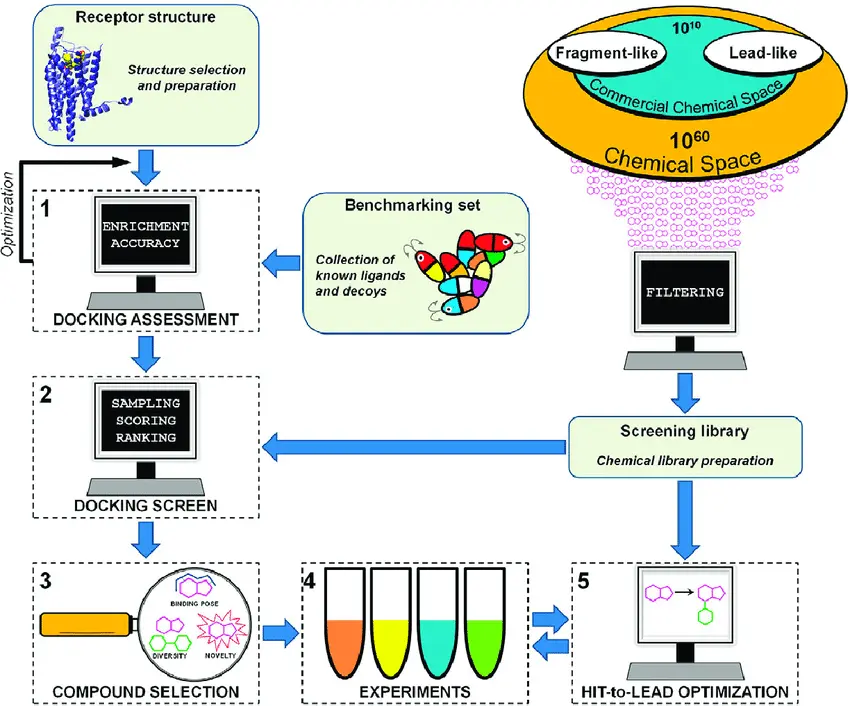
What Happens in Ligand–Receptor Binding?
When a ligand binds to its receptor, it fits into a specific region on the protein called the binding site or active site. This is often compared to a key fitting into a lock. The strength and stability of this interaction depend on the shape and chemical properties of both the ligand and the binding site.
Accurately predicting this binding process is essential because:
It helps determine how strongly the molecule will bind (binding affinity).
It reveals how selective the molecule is for its intended target versus off-target proteins.
It provides insights into the biological activity and potential side effects.
Molecular Docking: The First Step
Molecular docking is one of the most widely used in silico techniques for simulating ligand–receptor interactions. Docking software places the ligand into the receptor’s binding site in various possible orientations and conformations. The goal is to find the best fit the pose with the lowest predicted energy, which suggests the most stable and likely binding mode.
Key aspects of molecular docking include:
Predicting how the ligand aligns in the binding pocket.
Estimating the strength of the interaction through scoring functions, which rank poses based on binding affinity.
Identifying important interactions like hydrogen bonds, hydrophobic contacts, and ionic interactions.
Docking is especially valuable for virtual screening, where thousands of molecules are tested computationally to identify those with the best predicted binding.
Going Beyond Docking: Molecular Dynamics Simulations
While docking provides a static snapshot of binding, real-life interactions are dynamic. Proteins and ligands constantly move and adapt their shapes in the body’s aqueous environment. To capture this, researchers use Molecular Dynamics (MD) simulations.
Molecular dynamics simulations model how atoms in the ligand–receptor complex move over time, under realistic temperature and solvent conditions. This reveals:
How stable the binding is over time.
If the ligand stays in the binding pocket or drifts away.
How the protein structure may adjust to accommodate the ligand (induced fit).
Key Benefits of Simulating Ligand–Receptor Interactions
Better Molecule Optimization: By visualizing how a ligand binds and interacts, scientists can modify chemical structures to improve binding affinity and selectivity.
Time and Cost Savings: Early predictions help reduce the number of compounds that fail during laboratory testing.
Understanding Off-Target Effects: Simulations can reveal unexpected interactions with other proteins, helping to assess potential side effects.
Supports Rational Design: Combining structural insights with experimental data speeds up the discovery and optimization of new therapeutic candidates.

